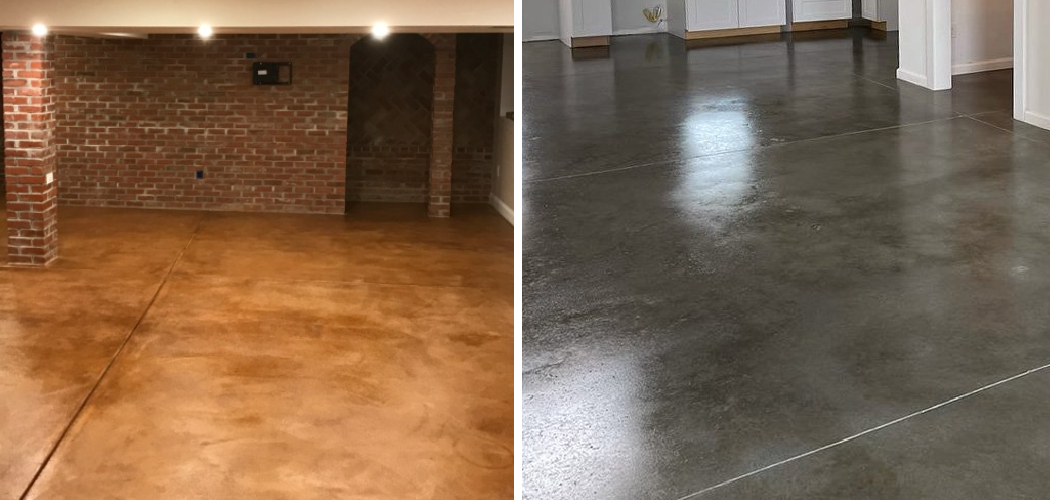Are you looking to finish up the concrete floor in your basement? Many people opt for this particular flooring choice as it can be incredibly durable and cost-effective. With a few DIY tips and tricks, you can have a great finished look that will last for many years.
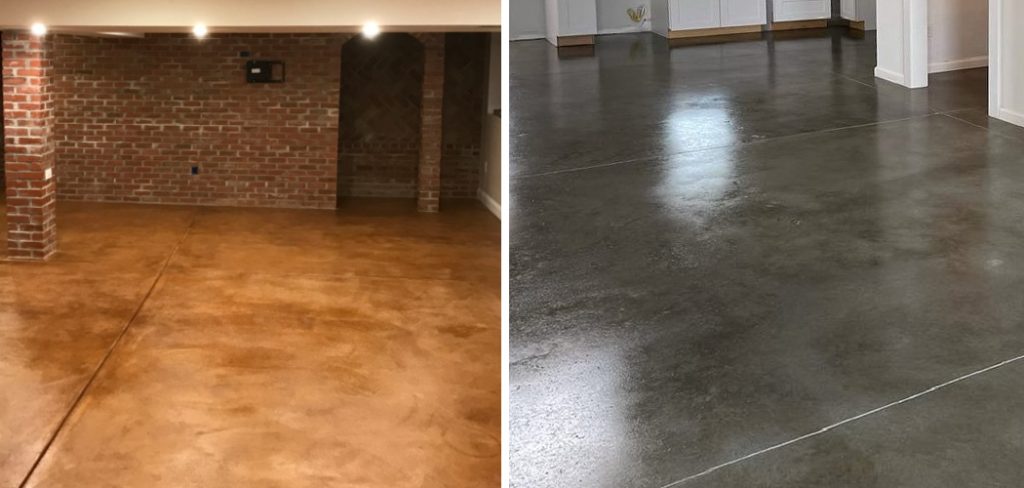
This blog post will provide you with some useful knowledge on how to finish concrete floors in basement so that they look great and function well long into the future. Whether you’re refinishing an old basement or finishing up a new build, we’ve got plenty of tips to help make sure your project is successful.
Tools and Materials You Will Need to Finish Concrete Floors in Basement
- Hammer
- Tape measure
- Level
- Chalk line
- Power drill
- Concrete sealer
- Floor leveling compound
- Sandpaper
- Polyurethane sealantTile grout with waterproofing additive (if using tile)
Step by Step Guidelines on How to Finish Concrete Floors in Basement
Step 1: Clean the Concrete Floor and Ensure That It is Level
Begin by sweeping the floor with a stiff-bristled broom to remove any dirt or debris, then apply a concrete cleaner on the floor to get rid of grease and oil stains. Once you have removed all surface contaminants, use a foam float dipped in water to check for low spots. If there are any, use a floor-leveling compound to even out the surface. This will ensure that your finished floor looks smooth and seamless.
Step 2: Install a Vapor Barrier
Once you have checked for any low spots and filled them in, lay down a layer of 6-mil polyethylene sheeting to act as a vapor barrier. This will help protect your basement from moisture damage. Be sure to overlap the edges of the sheeting at least 6 inches and use a hammer and nails to secure it in place.

Step 3: Apply Concrete Sealer
Once your vapor barrier is installed, you can apply a concrete sealer to the floor. This will help create an impermeable layer that will protect your basement from moisture damage. Use a paint roller to apply the sealer in an even coat across the entire floor. Be sure to let it dry completely before moving on to the next step.
Step 4: Add a Layer of Floor Leveling Compound
You may need to apply a layer of floor leveling compound if you have any larger low spots that weren’t filled in with your initial pass. This compound will help fill in any uneven areas and create a smooth surface. Use a trowel to spread the compound evenly across the floor, then let it dry completely before adding any additional layers.
Step 5: Sand Down Any High Spots
Once your floor leveling compound has dried, use an orbital sander with medium-grit sandpaper to sand down any high spots. This will help create a smooth, even surface that is ready for whatever flooring material you choose to install. Sanding will also help to ensure that the finished product looks just as good as you imagined it.
Step 6: Install the Flooring of Your Choice
Once your concrete floor is level and sanded, it’s time to install the type of flooring you’ve chosen. If you’ve decided to go with tiles, be sure to use a tile grout with a waterproofing additive. If you’re using a wood material, apply a coat of polyurethane sealant to protect it from moisture damage. While installing your flooring, be sure to take care that all seams are tight and there are no gaps in the surface.
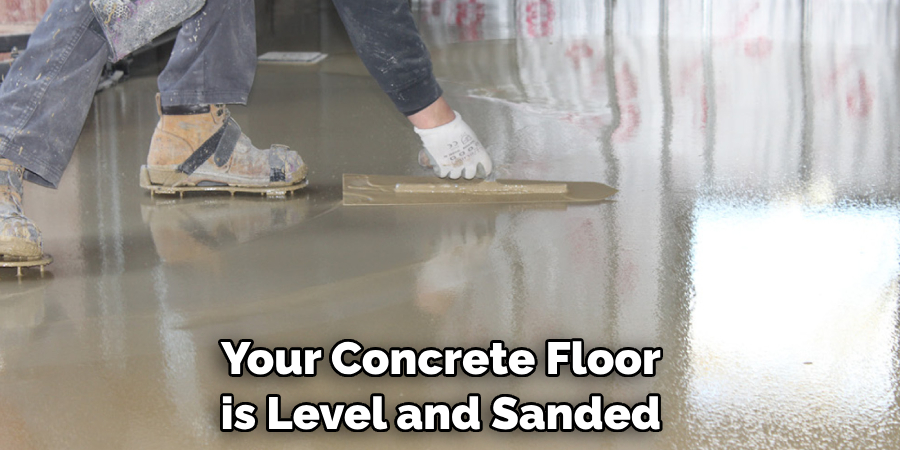
Step 7: Finish the Floor with Chalk Line and Sealer
Once you have installed your chosen flooring material, finish up the edges with a chalk line and seal the entire floor with a concrete sealer. This will help protect the floor from moisture damage and give it a nice, finished look. You can also apply a sealer to the edges of your tiles if you’ve chosen to use them.
Following these steps on how to finish concrete floors in the basement can help ensure that your project is successful and looks great for many years to come. With the right tools and materials, you can have a beautiful basement floor in no time. Good luck!
Additional Tips and Tricks to Finish Concrete Floors in Basement
- Consider using a sealer to help protect the concrete surface and prevent staining. A sealer will also make it easier to clean up spills and messes that may occur over time.
- Ensure that the floor is completely dry before applying any kind of sealant or paint. Moisture can cause issues with adhesion and lead to bubbling or cracking of the finish.
- If using paint, use a specialized paint that is designed for concrete surfaces. These paints are typically thicker and more durable than regular wall paint, which will help protect the floor from wear and tear.
- Use caution when applying any kind of coating to the floor. Over-applying can lead to cracking and bubbling.
- Consider adding a decorative finish to the floor for an added touch of style. Options include stenciling, stamping, or using concrete dyes to create a unique and personalized look.
- Use rugs and mats to help protect the finished surface from wear and tear over time. This will also add a touch of comfort and style to the room.
- Make sure to use a sealer made specifically for concrete floors in order to ensure maximum protection from moisture, staining, and wear.
- Keep an eye out for any signs of damage or deterioration over time and take action as needed to fix or replace the finish when necessary. Doing so will help keep the basement looking great and prevent any major issues down the line.

Following these tips and tricks will help ensure that your concrete floors in the basement are finished correctly, look great, and last for years to come. With proper care and maintenance, you can enjoy a beautiful floor for many years to come. Good luck!
Things You Should Consider to Finish Concrete Floors in Basement
1. Check for Moisture:
It is important to assess the moisture level of concrete before you start installing any type of finishing material on it. Moisture can easily penetrate various materials and cause damage, so it is very important to make sure there are no signs of moisture in the basement before proceeding. Checking for areas of dampness, mold, and mildew can help you determine the extent of any moisture issues in the basement.
2. Choose Between a Coating or a Covering:
When it comes to finishing concrete floors in the basement, there are two main options available – coating or covering. The choice between these two will depend on factors such as the type of material, how much protection you need, and the look you’re trying to achieve.
If you want a more durable finish with a wide range of colors and textures, then the coating is likely to be the best option for your basement floor. On the other hand, if you want something that is more affordable and easier to install, then covering may be the better choice.
3. Find Suitable Finishing Materials:
Once you’ve decided which type of finishing material is best for your basement, it’s time to start researching the different materials available on the market. Depending on what type of finish you are looking for, there are a variety of options that can help you achieve the desired look. Whether you opt for tile, wood, laminate, vinyl, or carpeting – make sure to do your research so that you find the best product for your needs.
4. Install Properly:
Once you have found the right material and determined which type of finish is best suited for your basement floor, it’s time to start installing it. Installing the material properly is essential for achieving a good finish, so make sure to follow the manufacturer’s instructions correctly. If you are not confident in your ability to do this, it may be worth hiring a professional installer who can ensure everything is done correctly.
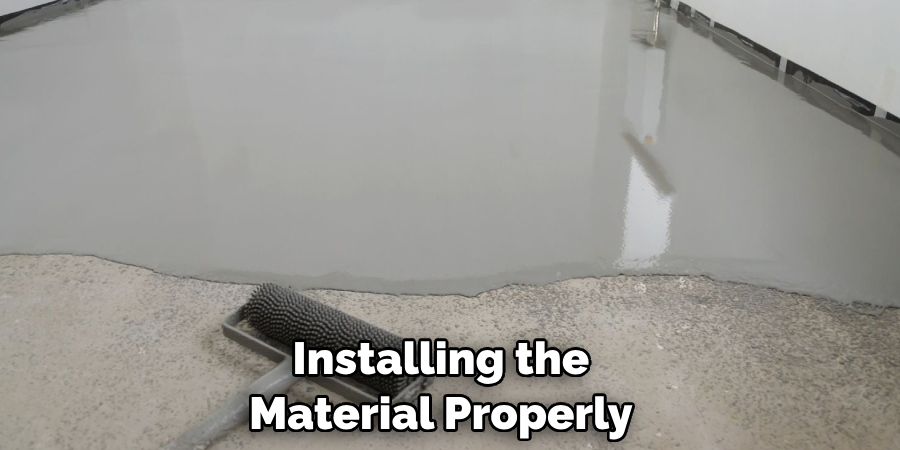
5. Maintain Regularly:
Last but not least, once you have finished installing your basement floor, it’s important to maintain it on a regular basis. This means cleaning and vacuuming regularly, as well as sealing any cracks or damage that might occur over time. By doing so, you can ensure your basement floor looks great for years to come.
Finishing concrete floors in the basement is not an overly difficult task, but there are certain things that you should consider beforehand. Making sure to check for moisture, choosing between a coating or covering, finding suitable finishing materials, installing properly, and maintaining regularly are all key steps in ensuring your basement floor looks great for years to come.
Frequently Asked Questions
How Thick Should the Concrete Be?
Generally, a minimum of 4 inches of concrete is needed for a finished floor in a basement. However, if you are laying down tile, carpet, or wood flooring, then you may need to pour thicker layers of concrete in order to provide enough support.
How Long Does It Take To Finish Concrete Floors in Basement?
The time it takes to finish concrete floors in a basement will depend on the size of the area, the amount of surface preparation needed, and the type of flooring you are using. Generally speaking, it can take anywhere from one day to several weeks to complete the project.
Do I Need to Seal the Concrete?
Yes, it is important to seal concrete floors in a basement. Sealing the floor will help protect against moisture and other damage from occurring. Additionally, sealing the floor can also improve its look and give it a polished finish.
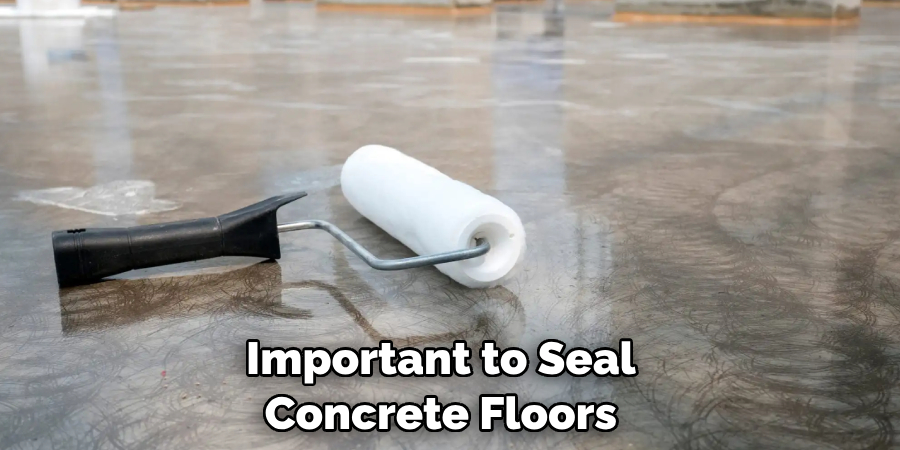
Do I Need a Professional for This Project?
It is not necessary to hire a professional in order to finish concrete floors in a basement. However, if you are not comfortable with the process or have any doubts about your ability to get it right, then hiring a professional may be the best option.
What Are Some Common Mistakes?
One of the most common mistakes people make when finishing their concrete floors in a basement is not allowing sufficient time for curing before laying down the flooring. Additionally, it is important to make sure the concrete has been properly mixed and poured. Finally, be sure to clean the floor thoroughly before applying any sealant or other treatments.
Conclusion
After exploring the ways how to finish concrete floors in basement, it’s time to act. Now that you know the steps required for each project, gauge your enthusiasm and budget. Do you have what it takes to take on the challenge yourself or should you turn this into a professional job? Finishing concrete floors can be easy and cost-effective if you plan ahead and do your research.
Remember to collect samples of materials to ensure that color is cohesive throughout the project because if there is no planning involved, the outcome may not be what was expected. Start gathering your supplies and let creativity guide your way when it comes time to add those finishing touches that will make this space look modern and beautiful!
